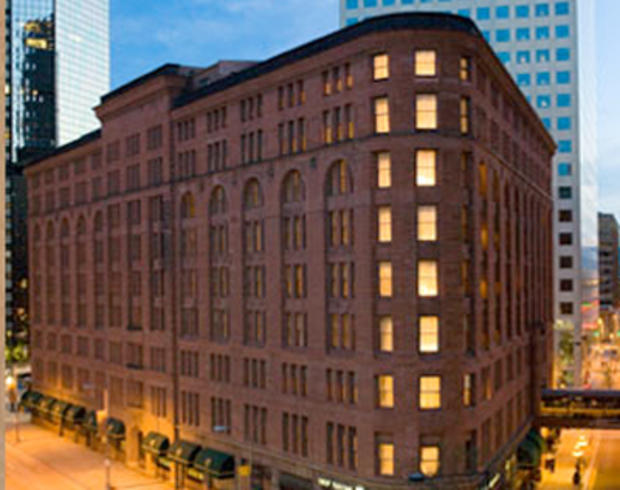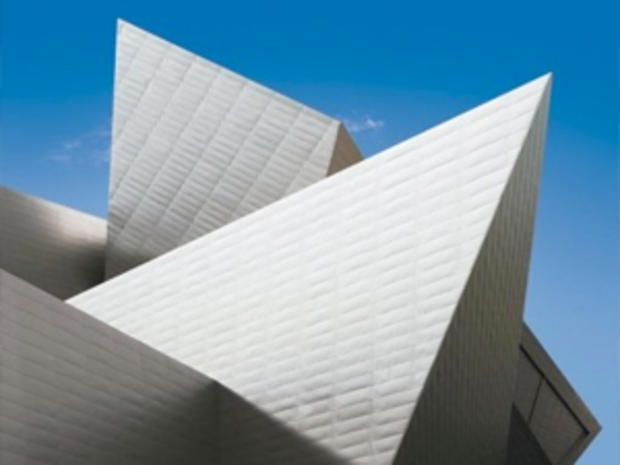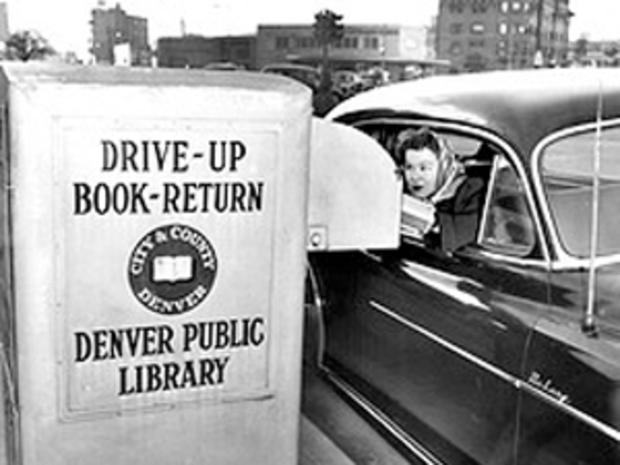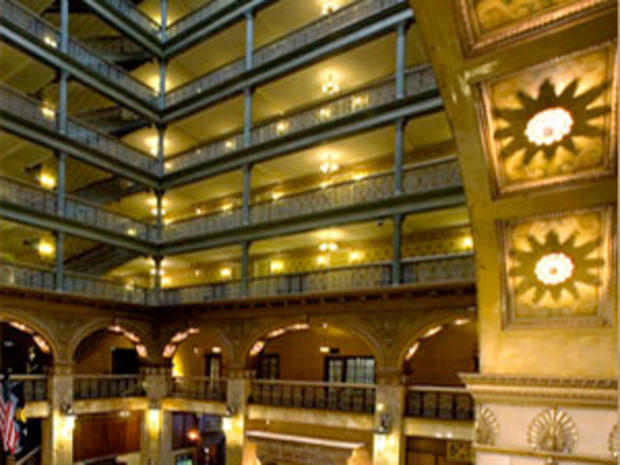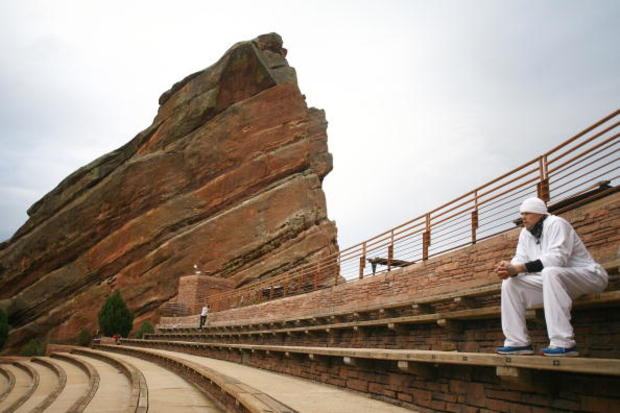Top Architecture In Denver
Even though Denver has just a little over a century of historical roots, remarkable displays of architecture can still be found that tell the story of the still-growing mile-high city. You can meander through mountain towns of wooded saloons and mining shacks, enjoy modern venues inside preserved downtown Victorian towers, or wonder at geological and historic structures depicting times of the West. Around the second week of April every year, Denver landmarks open their doors to showcase their architecture.Visitors can see over 80 sites, through the "Doors Open Denver" event - go to denvergov.org for the next event. Below you'll find a list of some of the best spectaculars to spectate.
Denver Art Museum
100 West 14th Avenue Parkway
Denver, CO 80204
(303) 865-5000
denverartmuseum.org
The Denver Art Museum is one of the largest art museums between Chicago and the West Coast, with 356,000 square feet of gallery and exhibition space, and 65,000 works of art from all around the world. The entire complex at the south part of downtown Denver is a limitless array of eye candy, with the two old and new museums joined by a bridge that house and display the art. The North Building is like a modern day castle, with more than a million reflective gray and glass tiles, narrow rectangle windows contrasted by an oval entrance, and jagged roof trimmings. It was completed in 1971 by industrial and neo-classical Italian architect Gio Ponti, and Denver-based James Sudler Associates. The Frederic C. Hamilton Building is the most recent addition to the complex, opening its doors in 2006, designed by Denver-based Davis Partnership Architects, and Poland-born American deconstructivist architect Daniel Libeskind, or as locals pass on "the one who's building the new World Trade Center site". Its outer edges boast steel, titanium and concrete triangles, as if a skyscraper was reduced by being chopped up by giant scissors. Inside, one can almost get dizzy by the sloping ceilings, narrowing walls, and kaleidoscope staircase spiraling to four floors. A must-see for modern architecture enthusiasts!
Denver Public Library
10 West 14th Avenue Parkway
Denver, CO 80204
(720) 865-1111
denverlibrary.org
The Denver Public Library has been serving the literary needs of Denver residents since 1889. And in 1995, the city satisfied not only the need for more space for the library's over five million books, but also modernized the structure with the expansion of the Central Library. The library is stacked with 540,000 square feet of multi-color tight towers, mimicking the nearby series of sky scrapers, modern day flying buttresses, a nod to classical architecture, and a vast atrium of four floors of media. It was created by a handful of different architects, from American archetypal architect Michael Graves, to Red Rocks Amphitheatre designer Burnham Hoyt. Kissing the Denver Art Museum, at the corner of 14th and Broadway near downtown Denver, the Central Library stands as a huge post-modern architecture icon, serving more for its bountiful research, outer beauty and hip activities, than for a cozy place to study.
Colorado State Capitol
200 East Colfax Avenue
Denver, CO 80203
(303) 866-2604
colorado.gov
Visiting the state capitol is a school field-trip favorite. It's best recognized for its shining gold dome atop the structure, which is truly made out of 200 ounces of pure gold leaf. You can stand atop the stairs at the west entrance approximately 5,280 feet above sea level, symbolizing Denver's altitude. Visitors will tour a complex and deliberate design and display of statues honoring Colorado heroes and historical events, grand rooms of woodwork, brass and stained glass where politicians once met and still meet, and a most memorable gallery of oil portraits of all the United States Presidents today. The architecture is a mix of Greek and Corinthian order for its solidity and bell shape, and the structure was built of all things Colorado, from Gunnison Granite, Colorado Onyx and Fort Collins Sandstone. Groundwork for the design of the Capitol began as early as Colorado's state recognition, and was completed by Elijah Myers by 1908. Touring the capitol proves more than just a political site-see.
Brown Palace
321 17th Street
Denver, CO 80202
(303) 297-3111
brownpalace.com
The Brown Palace hotel is both nationally and locally known for its royal elegance and rich history. It's located at the corner of 17th and Tremont in eastern downtown Denver. Its interior of lush Victorian and Art Deco design captivates you and makes you feel like vintage Denver high society. The hotel has seen guests from weary gold rushers needing a place to stay, after its doors opened in 1892, to today's locals who have made it an annual special occasion, including many famous people from Roosevelt to The Rolling Stones. Important entrepreneur of the time Henry C. "Brown" developed this Italian Renaissance "Palace" with the help of architect Frank E. Edbrooke, who also had hand in the State Capitol and many other Denver landmarks. The uniquely triangular building is shaped with Colorado red granite and Arizona sandstone, a Mexican-onyx filled lobby, a variety of semiprecious quartz throughout, an eight-story atrium lined with cast-iron balconies, and a stained-glass ceiling that demands a constant look upward. Even the hotel restaurants take you to a time ago, like the Palace Arms decorated with 17th Century antiques and Napoleonic style, to the Ship Tavern, surrounding you with cozy post-prohibition dark wood and antique nautical replicas. The Brown Palace is a must-see and a must-stay.
Red Rocks Amphitheatre
18300 W. Alameda Parkway
Morrison, CO 80465
(720) 865-2494
redrocksonline.com
Just 15 miles outside of Denver in the foothills near Morrison, Mother Nature can be attributed to being the creator of one of Colorado's finest displays of architecture. Red Rocks Amphitheatre is a wonderful coincidence of over 250 million years of geological movement that formed a perfect enclosure and reflection of sound with its taller than Niagara Falls sandstone monolith rocks. Mainly used for unforgettable concerts, Red Rocks' two famed 300 foot rocks, Ship Rock and Creation Rock, face each other, nearly identical in size and shape, with the help of a large, tilted rock behind the stage sloped below, a vertical rock to the right of the stage, and large boulders to the left side, all providing the circle of sound. Man did have a hand in some of its construction as well. Denver Architect Burnham Hoyt gutted the center of the rocks and debris to provide over 9,000 carefully lined, wide bleacher-like seating, including internationally-styled lined brick additions, and wrapping, red stairways. Denver has been using this wonder of nature for concerts since 1910, but goers also use the 868 acres for exercise groups, picnics, graduations or just simply enjoying the panorama view of Denver on the horizon.
- Sarah Carpenter lives in Littleton, where she was born and raised. She spent a decade in Downtown Denver, and its surrounding neighborhoods, going to school for writing, working in the service industry, and getting to know Denver's diverse culture. She has a passion for travel writing, local and afar, focusing the story on its people, culture and region.
